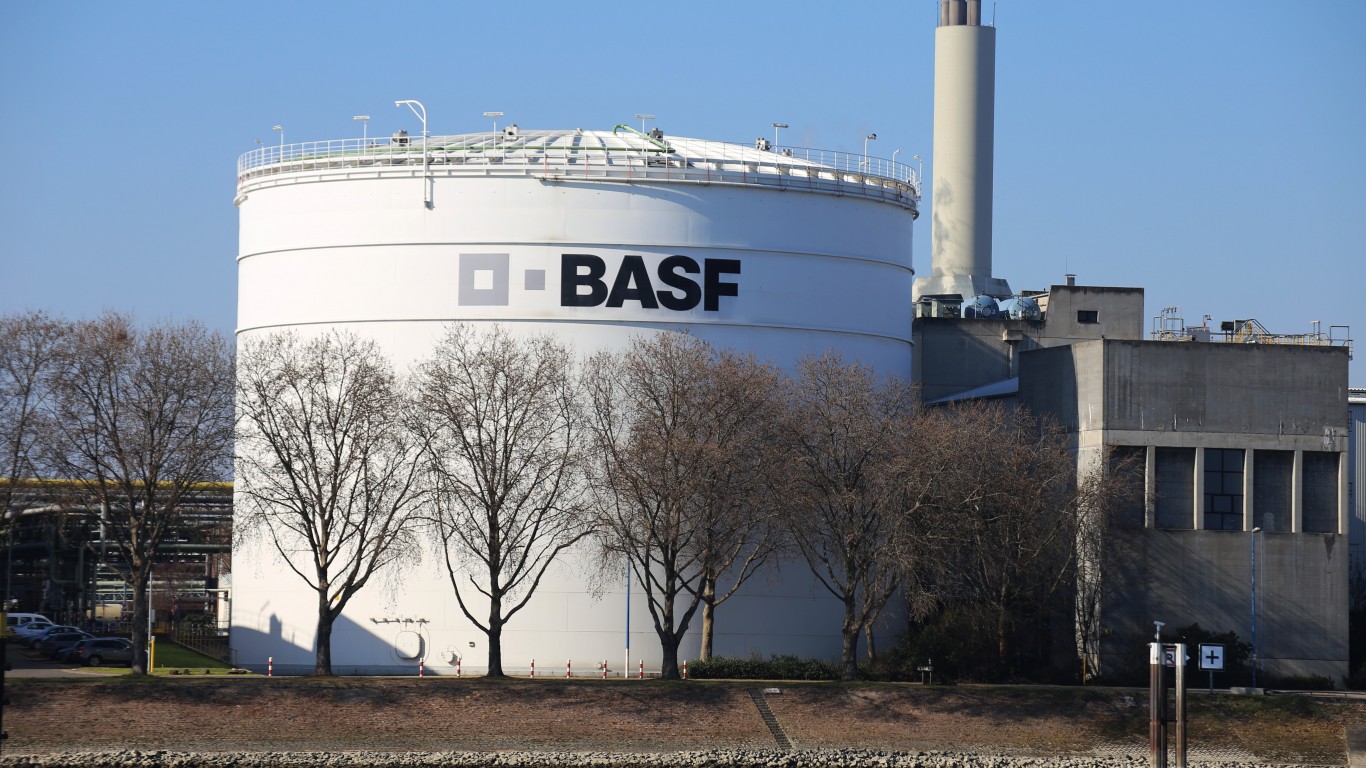
10. BASF
> Toxic hazard (pounds released x toxicity): 2,859,840,185
> Environmental justice, poor population share 25% – #70 highest out of 100 corporations
> Environmental justice, minority population share 12% – #79 highest
> Pct. of toxic hazard from a single facility: 53% – #84 highest
BASF is a German multinational corporation that owns scores of plants throughout the U.S., mainly in the South. More than half of its water pollution from its American facilities comes from its Wyandotte, Michigan, chemical plant.
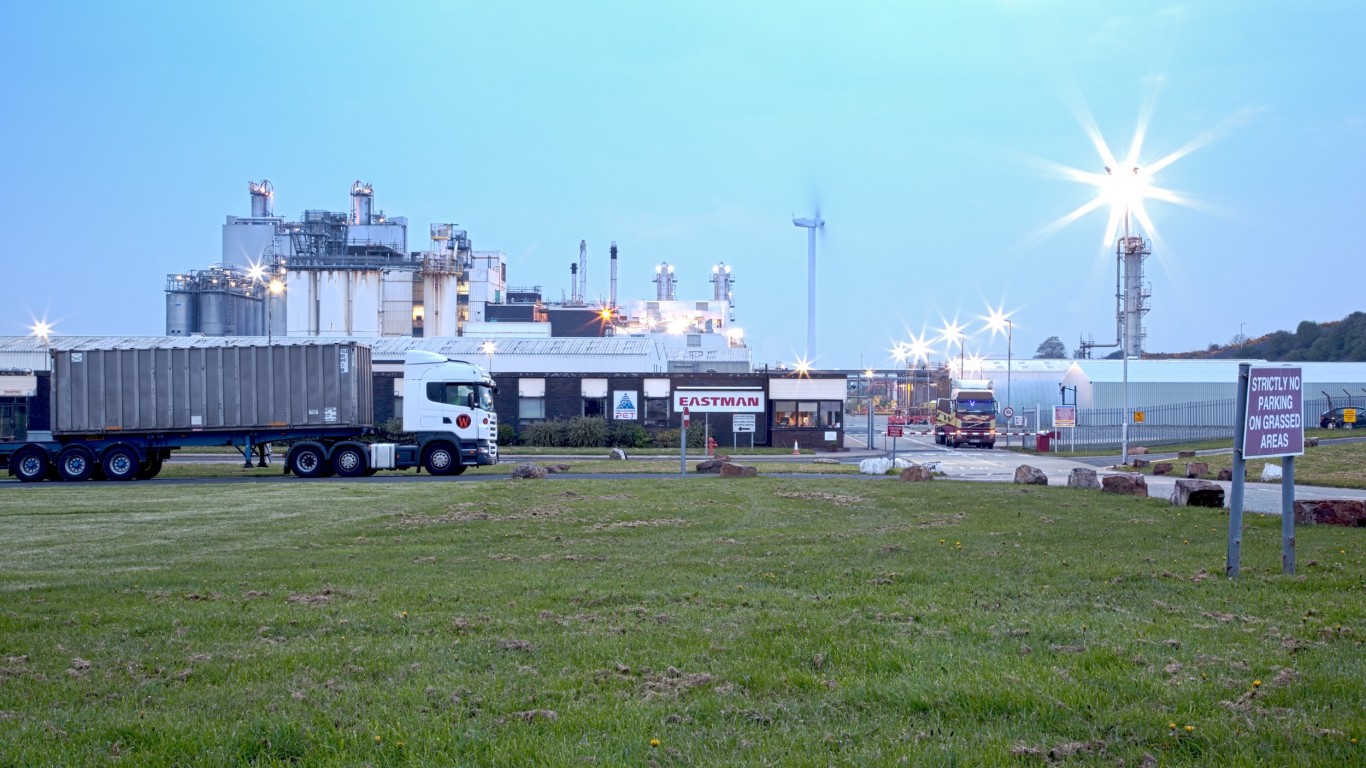
9. Eastman Chemical
> Toxic hazard (pounds released x toxicity): 3,931,110,749
> Environmental justice, poor population share 43% – #11 highest out of 100 corporations
> Environmental justice, minority population share 17% – #71 highest
> Pct. of toxic hazard from a single facility: 94% – #42 highest
Eastman Chemical is a global manufacturing company specializing in advanced materials, chemicals, and fibers. Its Kingsport, Tennessee, plant was founded in 1920 by George Eastman, the photography popularizer and entrepreneur. The Kingsport facility is also currently responsible for almost all of the company’s water pollution, with a quarter of a million pounds of toxic wastewater going into Tennessee surface water.
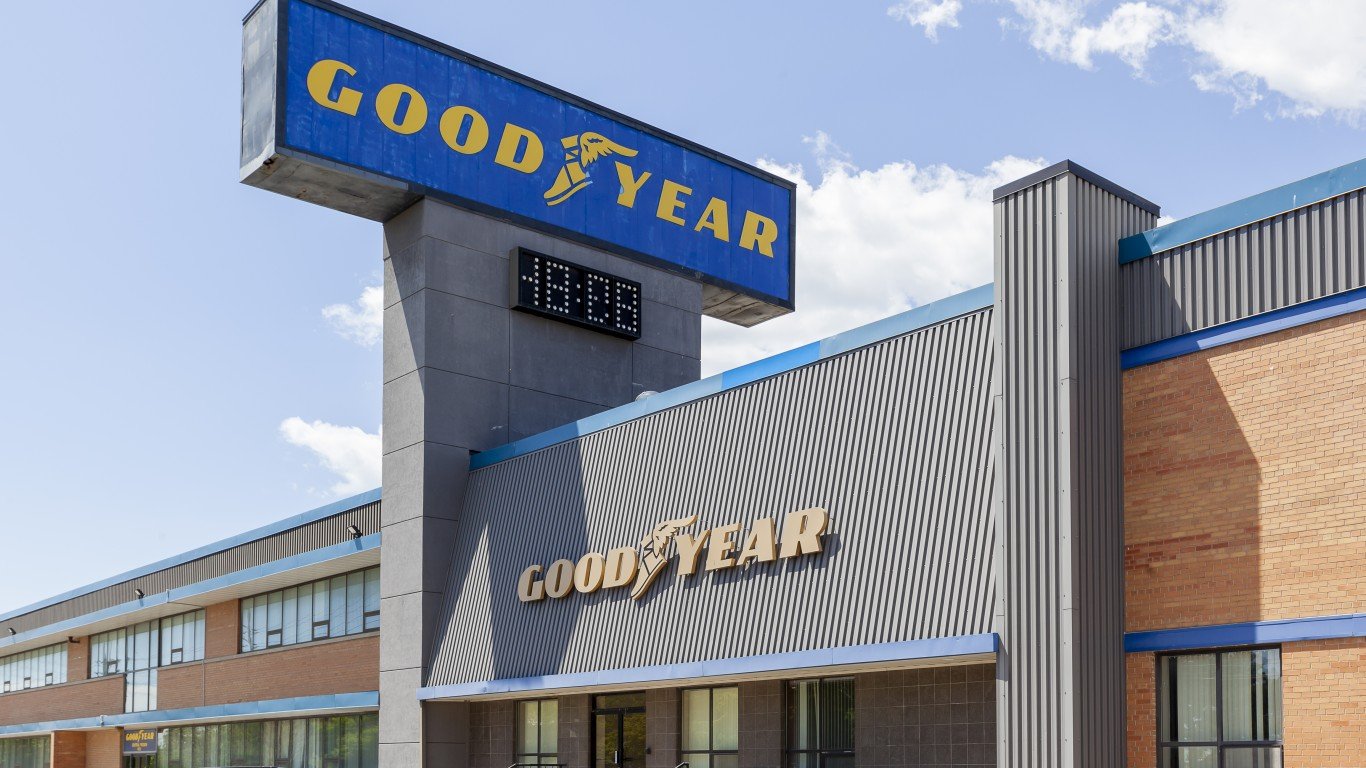
8. Goodyear Tire & Rubber
> Toxic hazard (pounds released x toxicity): 3,936,322,205
> Environmental justice, poor population share 36% – #32 highest out of 100 corporations
> Environmental justice, minority population share 46% – #26 highest
> Pct. of toxic hazard from a single facility: 100% – #1 highest
Goodyear’s biggest and most polluting plant is in Niagara Falls, New York, where it releases a toxic brew into the local treatment plant. The most toxic chemical in the mix is hydroquinone, used in the manufacture of rubber. Contact with the chemical can have numerous effects – from eye cloudiness and rashes to headaches and nausea. Long-term exposure can cause organ damage. Drinking it is lethal.
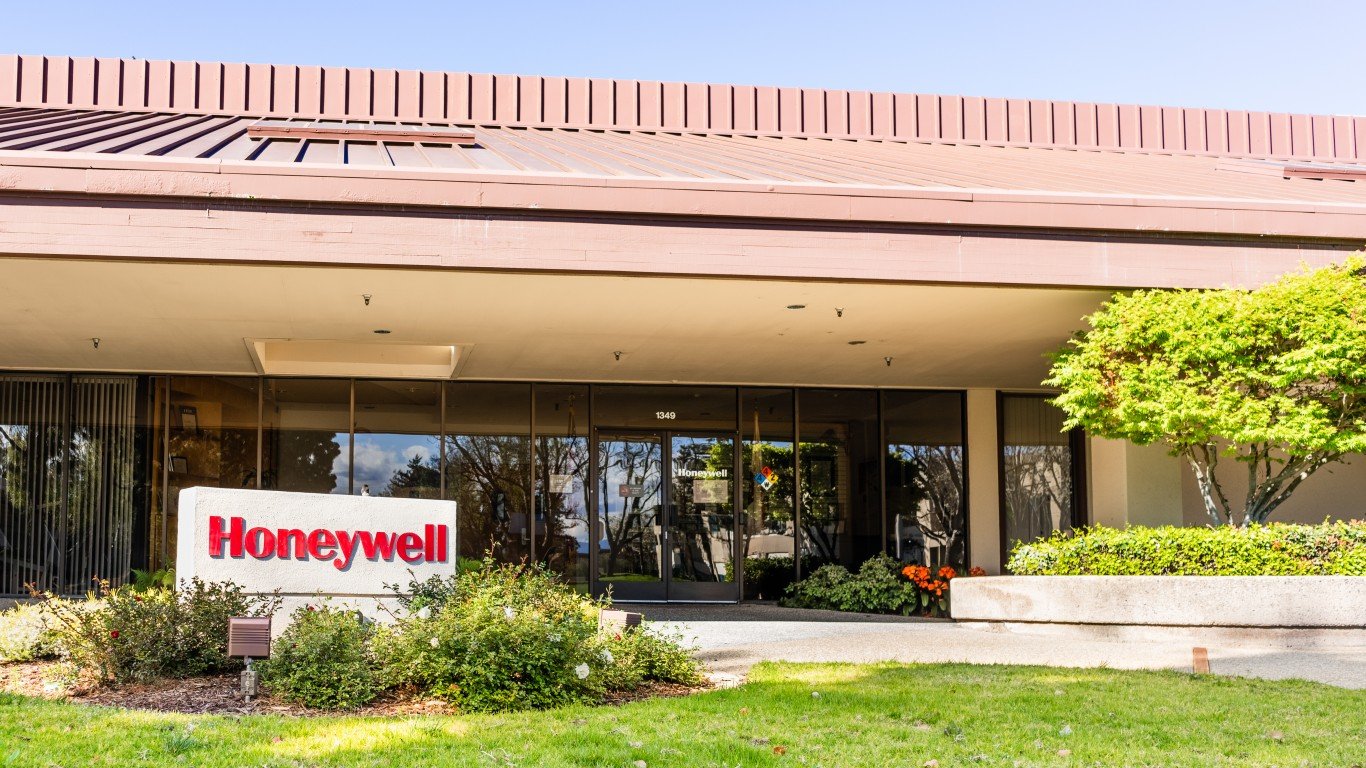
7. Honeywell International
> Toxic hazard (pounds released x toxicity): 6,369,256,668
> Environmental justice, poor population share 39% – #23 highest out of 100 corporations
> Environmental justice, minority population share 47% – #23 highest
> Pct. of toxic hazard from a single facility: 100% – #1 highest
Plagued by chemical leaks and employee deaths related to chemical exposure, the Geismar Honeywell plant in Carville, Louisiana, produces almost all of the company’s toxic wastewater. It is located upstream of a community that is more than half minority, and over 39% of nearby residents live in poverty.
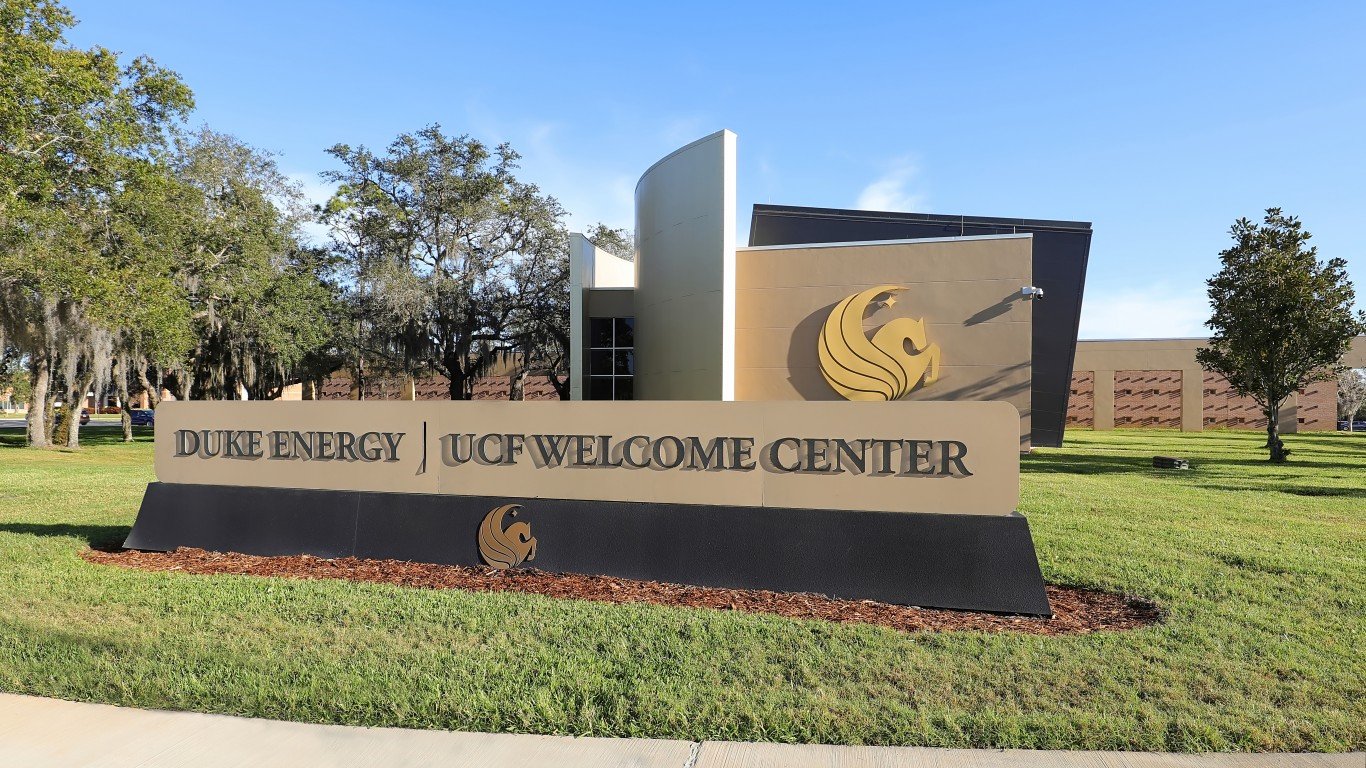
6. Duke Energy
> Toxic hazard (pounds released x toxicity): 6,765,810,638
> Environmental justice, poor population share 19% – #87 highest out of 100 corporations
> Environmental justice, minority population share 8% – #85 highest
> Pct. of toxic hazard from a single facility: 87% – #52 highest
Duke Energy’s generating plant in Cayuga, North Carolina, discharges 3,400 lbs of pollutants, mainly metals and arsenic into the state’s waters. The plant releases most of the company’s toxic wastewater. Duke energy has run into environmental problems from the unpermitted and unquantified pollutants emanating from its landfilled coal ash. In 2015, the company was required to pay $25.1 million in cleanup costs for groundwater polluted by coal ash at its Semora, North Carolina plant.






